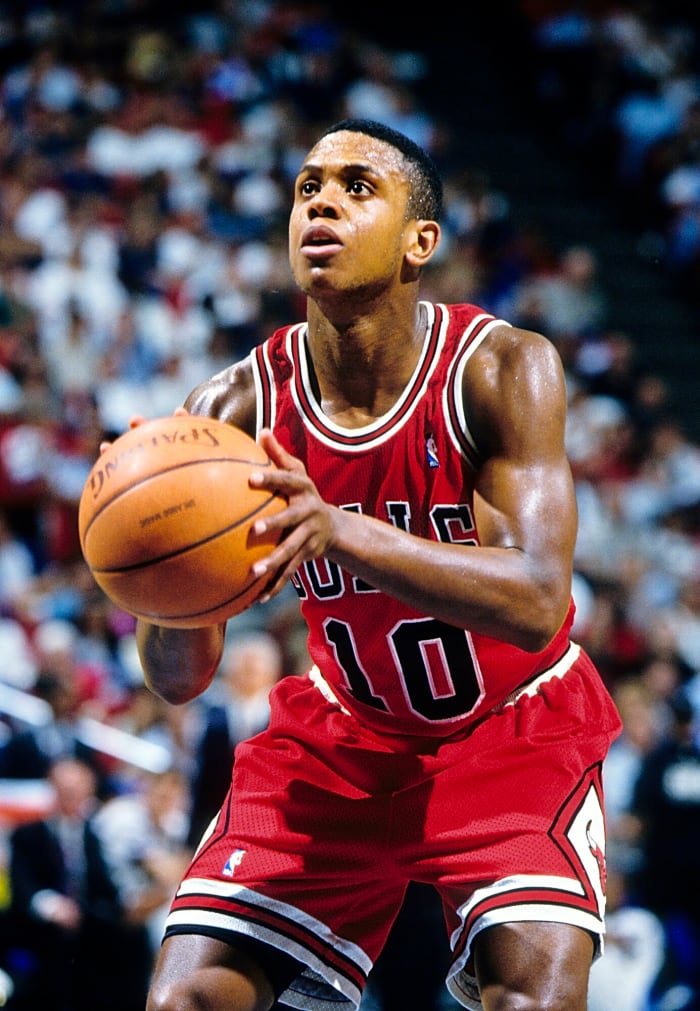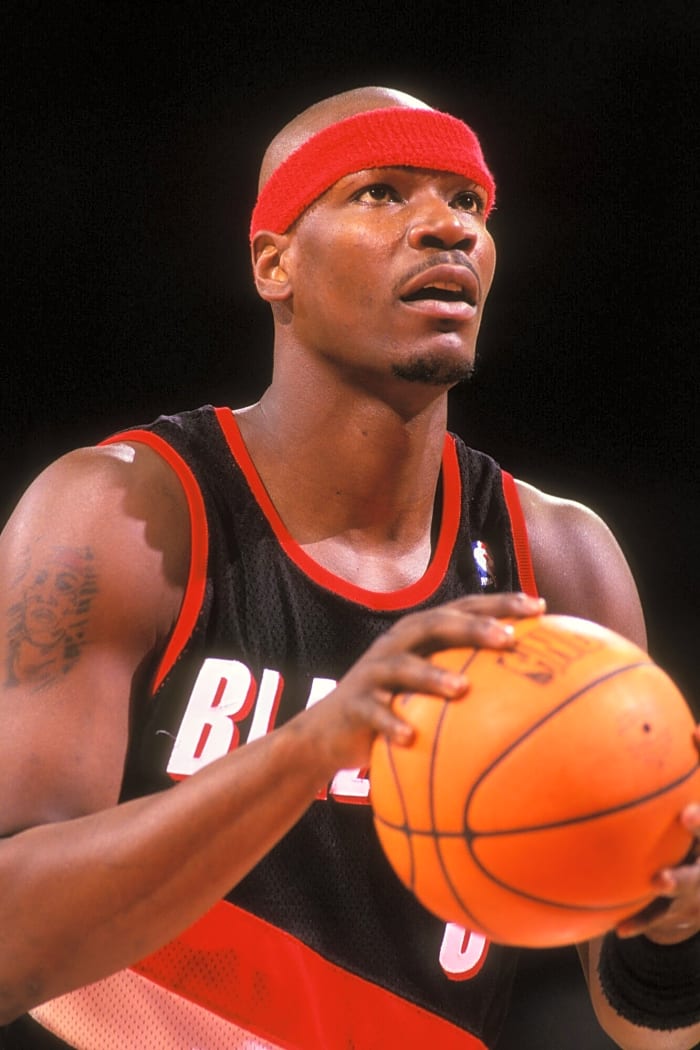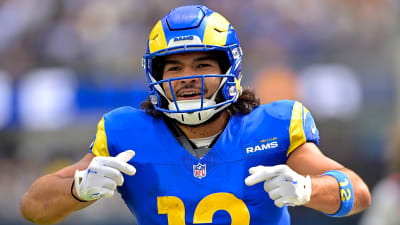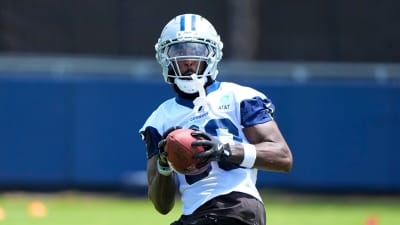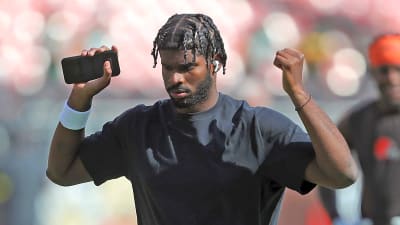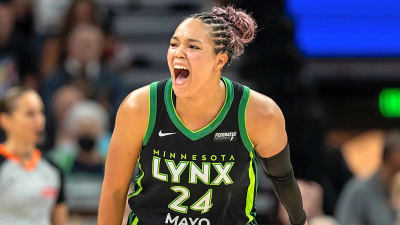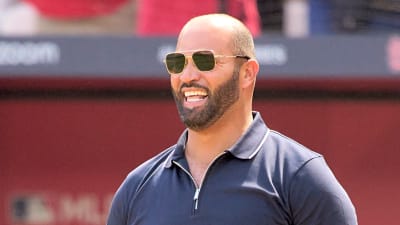Throughout NBA history, a total of 532 players have been named All Stars. Of those players, 173 only made one All-Star Game appearance. Here are 25 of those one-time All Stars that you may have forgotten made only one All-Star team (like Andre Iguodala) or didn't realize ever were star-caliber players at one point in time (like Kyle Korver).
Note: No active players appear on this list, only retired players.
Gary A. Vasquez-Imagn Images
At 24, Andrew Bynum finally put the tools together and started the 2012 All-Star Game in his lone appearance. The 2011-12 season was the NBA's most recent lockout season, and a 60-game sprint from start to finish. Bynum put up impressive numbers all season - 18.7 PPG and 11.8 RPG on 55.8 percent shooting as the Lakers’ interior anchor. Unfortunately, this was the peak for Bynum, who seemed to lack the motivation to be an elite big man and was out of the NBA before he turned 27.
Getty Images - Doug Pensinger / Staff
John Starks was the emotional heartbeat of those gritty ’90s Knicks, known for his incredible dunk over Michael Jordan and Horace Grant in the 1993 NBA playoffs. But did you realize he was also an All-Star the following season? That year, the Knicks reached the NBA Finals, in large part because of Starks' excellent season, where he averaged 19 PPG and 5.9 APG.
Getty Images - Elsa / Staff
Sam Cassell was a stud point guard from 1996 to 2004, averaging 18.8 PPG and 7.1 APG during that stretch. It's pretty surprising that he only made an All-Star team in the final year of that period as a 34-year-old. In his lone All-Star season, he helped orchestrate Minnesota’s best season ever, and Cassell averaged 19.8 points and 7.3 assists, closed games like a surgeon, and got the Wolves to the West finals. He was mid-range king before mid-range became cool again.
Jeff Hanisch-Imagn Images
Michael Redd's only All-Star season saw him average 21.7 PPG, but that wasn't even close to his best season, which was 2005-06, where he averaged 25.4 PPG on 45-40-88 shooting. Before injuries, Redd was one of the league’s purest shooters and premier left-handed players.
Kim Klement-Imagn Images
Though his numbers didn't scream All-Star - 17.8 PPG on 47-44-91 shooting - Mo Williams was the second-best player alongside LeBron James on a 66-win Cavaliers team in 2008-09. Williams provided the kind of off-guard scoring pop the Cavs thought they were getting when they had signed Larry Hughes a few summers earlier. Alas, Williams was a little overmatched in the Robin role and could never recreate the All-Star magic again in his career.
Kim Klement-Imagn Images
The 2008-09 season was an amazing year for the Orlando Magic, and it began with Jameer Nelson's breakout that saw him average 16.7 PPG and 5.4 APG with 50-45-89 shooting splits through 42 games. Unfortunately, for Nelson, he tore his labrum right before the All-Star Game and not only missed the game, but missed the entire playoff run through the Eastern Conference. Though he would return for the NBA Finals, he clearly wasn't himself and wasn't able to recreate his regular-season magic.
Brett Davis-Imagn Images
Kyle Korver's numbers from his only All-Star appearance certainly don't scream "ALL STAR!", but there's some context that needs to be considered here. First, the Eastern Conference was terrible. Second, the Atlanta Hawks were an absolute machine that season and ripped through the East, winning 60 games, much in part the elite spacing that Korver provided - he shot 49.2 percent from both the field and the three-point line, plus 89.8 percent from the field.
8 of 25
Jeff Teague, Atlanta Hawks, 2014-15
Jason Getz-Imagn Images
Jeff Teague is a man of many talents. Believe it or not, but the world's most hilarious podcaster was also a helluva basketball player at one point in his career. In fact, in 2014-15, he joined teammates Kyle Korver, Paul Millsap, and Al Horford on the All-Star team as members of the awesome, but forgotten about 60-win Atlanta Hawks (thanks, LeBron). Teague also didn't have crazy numbers - 15.9 PPG and 7 APG - but he ran Mike Budenholzer's system very well, playing high-level point guard.
Brace Hemmelgarn-Imagn Images
It almost feels impossible that Andre Iguodala was only a one-time All-Star given his Finals MVP, four rings, and two decades of respect around the league. But his lone appearance came in 2012 with Philly, when he stuffed the stat sheet, scoring 12.4 PPG, 6.1 RPG, and 5.5 APG and was known as one of the league’s best perimeter defenders. He was more of a connector than a scorer, which is probably why he never racked up selections. Still, few players can match his career résumé with just one All-Star nod on it.
10 of 25
Juwan Howard, Washington Bullets, 1995-96
Getty Images - Sporting News Archive / Contributor
Juwan Howard’s second season was his peak year in the NBA where he averaged 22.1 PPG, 8.1 RPG and even 4.4 APG at the age of 23. The Fab Five member got after opponents with face-up jumpers and bully drives. He never quite reached that peak again, but remained a consistent 18-point, seven-rebound-per-night player for the first decade of his career.
Getty Images - KIMBERLY BARTH / Staff
Christian Laettner’s pro prime came in Atlanta, where he averaged 18.1 PPG and 8.8 RPG and made his lone All-Star. He complemented Mookie Blaylock and Dikembe Mutombo with skilled, elbow-area offense. His savvy, high-post connective play helped spur the Hawks to 56 wins that season.
Getty Images - Tom Hauck / Staff
With Alonzo Mourning sidelined, Anthony Mason soaked up front-court usage and responded with 16.1 PPG and 9.6 RPG as a 34-year-old. Despite being a very tough, do-it-all forward with a huge frame, this was his only All-Star game appearance. The 2000-01 season also doubled as Mason's final season as a difference-maker in the NBA.
Getty Images - Nathaniel S. Butler / Contributor
Michael Jordan's enforcer, Charles Oakley's lone All-Star appearance came in 1993-94 for the Eastern Conference champion New York Knicks - it's almost as if MJ gave Oak permission to be an All-Star the one season he was retired. The league's preeminent tough guy also received All-Defensive honors as the Knicks ground their way to the Finals.
Ron Chenoy-Imagn Images
For a brief window, Danny Granger looked like the next great wing scorer in the East. In 2008-09, he averaged 25.8 PPG and earned Most Improved Player, along with his lone All-Star nod. Unfortunately, knee injuries hit just as Paul George was coming into his own, cutting short what could’ve been multiple All-Star trips for the wing duo. Today, he’s remembered more for “what if?” than his actual peak dominance.
RVR Photos-Imagn Images
With Michael Jordan retired momentarily, B.J. Armstrong emerged as one of the better guards in the conference, averaging 14.8 PPG on 48-44-86 shooting splits for the 55-win Bulls. He was the space-creating guard Chicago needed to keep the offense humming. Efficient, steady and clutch.
Getty Images - HECTOR MATA / Contributor
Nick Van Exel ran Showtime 2.0 to a 61-21 record and snagged his only All-Star in 1997-98. From the line-drive threes, lefty crossovers, and live-dribble lasers to Shaquille O'Neal, Nick the Quick was one of the more electric players in the NBA for a moment. Van Exel paved the way for the Isaiah Thomas- and Malik Monk-type of instant offense, entertaining scoring guards that have thrived in the NBA in recent years.
Getty Images - Mitchell Layton / Contributor
The late Clifford Robinson was born too early, and would have been an elite small-ball big man in today's NBA - as seen by his 1993-94 season. That year, the year after he won the Sixth Man of the Year award, “Uncle Cliffy” parlayed his move into the starting lineup into 20.1 PPG and 6.7 RPG. He would go on to develop into a great defender, making two All-Defense teams, and a sweet-shooter, nailing over 37 percent of his threes in seven different seasons.
18 of 25
Cedric Ceballos, Los Angeles Lakers, 1994-95
Mark J. Rebilas-Imagn Images
Cedric Ceballos thrived during the pre-Shaq & Kobe era in Los Angeles, and made his lone All-Star team in the 1994-95 season, where he averaged 21.7 PPG and an impressive eight RPG as a small forward. He would miss the actual All-Star Game due to an injury, but deserves recognition in his list for his high-efficiency scoring (51-40-72 shooting splits).
19 of 25
Jamal Mashburn, New Orleans Hornets, 2002-03
Getty Images - Jamie Squire / Staff
Jamal Mashburn, aka “The Monster Mash”, was a walking bucket throughout the ’90s and early 2000s - scoring over 20 PPG in six separate seasons - but somehow only cracked the All-Star roster once—in 2002-03 with New Orleans. That year, he averaged 21.6 PPG, 6.1 APG, and 6.1 RPG, carrying a Hornets team that leaned on his playmaking. Knee problems robbed him of longevity, but in his prime, he was a smooth 6-8 forward who could score from anywhere. His single All-Star feels criminally low for his talent and production.
Getty Images - Brian Bahr / Staff
Before knee trouble, Antonio McDyess looked like he'd be a perennial All-Star - a 20 and 10 guy on a nightly basis. In 2000-01, his lone All-Star season, he averaged 20.8 PPG and 12.1 RPG. A vertical explosion artist who also had a smooth 15-footer. McDyess had a brief peak, but then a decent second half of his career as an off-the-bench veteran.
Getty Images - Rick Stewart / Stringer
Long before his coaching career defined his NBA legacy, Doc Rivers was a solid two-way point guard for Atlanta. He averaged 14.2 PPG, 9.3 APG, and 4.6 rebounds in 1987-88, guiding Dominique Wilkins and the Hawks to 50 wins and earning his lone All-Star berth. He wasn’t flashy, but he was reliable, tough, and could push the tempo. Most fans under 40 know him as a coach, not as a one-time All-Star floor general.
22 of 25
World B. Free, San Diego Clippers, 1979-80
John Geliebter-Imagn - Focus On Sport / Contributor
It's a travesty that the man with arguably the best name in NBA history, World B. Free, only made one All-Star Game. The season he made it, 1979-80, he averaged a career-high 30.2 PPG and led the league in free throw attempts (11.2) and makes (8.4) the the second consecutive season. The crazy thing is, Free finished sixth in MVP voting the prior season and made the second-team All-NBA, but somehow wasn't an All-Star.
23 of 25
Metta World Peace, 2003-04, Indiana Pacers
Getty Images - Doug Benc / Staff
Back when he was still Ron Artest, Metta World Peace doubled as the NBA's best defender and toughest small forward for the contending Indiana Pacers. In 2003-04, he not only earned his only All-Star selection but also won Defensive Player of the Year and nearly led the Pacers to the title. If you had asked people within the NBA what his next five years would look like, they all would have predicted five All-Star appearances, some All-NBA seasons, another Defensive Player of the Year award or two, maybe a championship or two, and maybe even an MVP award - he was that impactful. Sadly, the Malice in the Palace happened early in 2004-05, and, while he was still a great player, he was never the same superstar.
Getty Images - Jeff Gross / Staff
Vlade Divac was a skilled, passing center ahead of his time, and in 2000-01, he finally broke through as an All-Star with the Kings. He averaged 12.0 PPG, 8.3 RPG, and 2.9 APG, helping Sacramento become a Western Conference contender. Between him and Chris Webber, the Kings had two of the best big-man passers in the league, and made the Kings the most entertaining team in the league.
25 of 25
Derrick Coleman, New Jersey Nets, 1993-94
Getty Images - Bongarts / Staff
Derrick Coleman was the original DeMarcus Cousins - an ultra-talented big man with all the tools to be a Hall of Fame player, but, for whatever reason, things just never fully clicked. After winning the 1991 Rookie of the Year award, Coleman looked like a perennial All-Star candidate, but he only made it once, in 1993-94 with New Jersey. That season, he averaged 20.2 PPG, 11.3 RPG, and 3.4 APG, flashing the skill set of a modern stretch-four before the league was ready for it. Consistency and questions about effort held him back from greater recognition. Even so, at his peak, he was as talented a power forward as there was in the league.
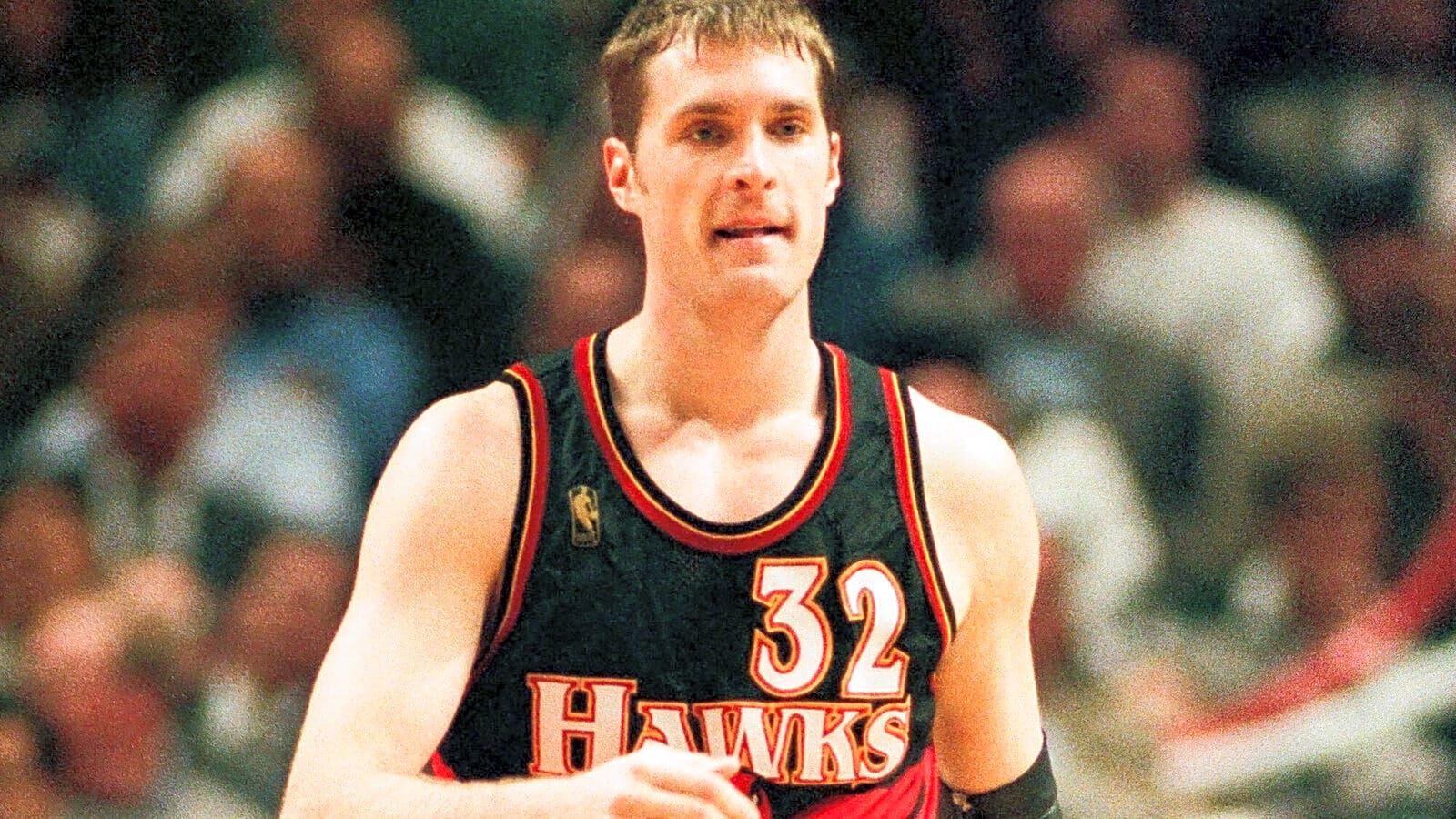
 +
+














